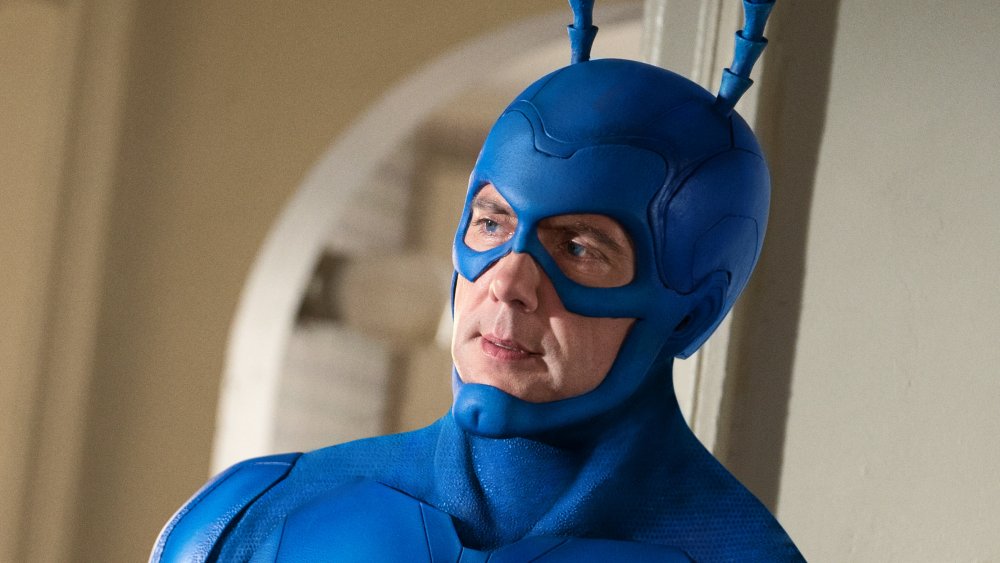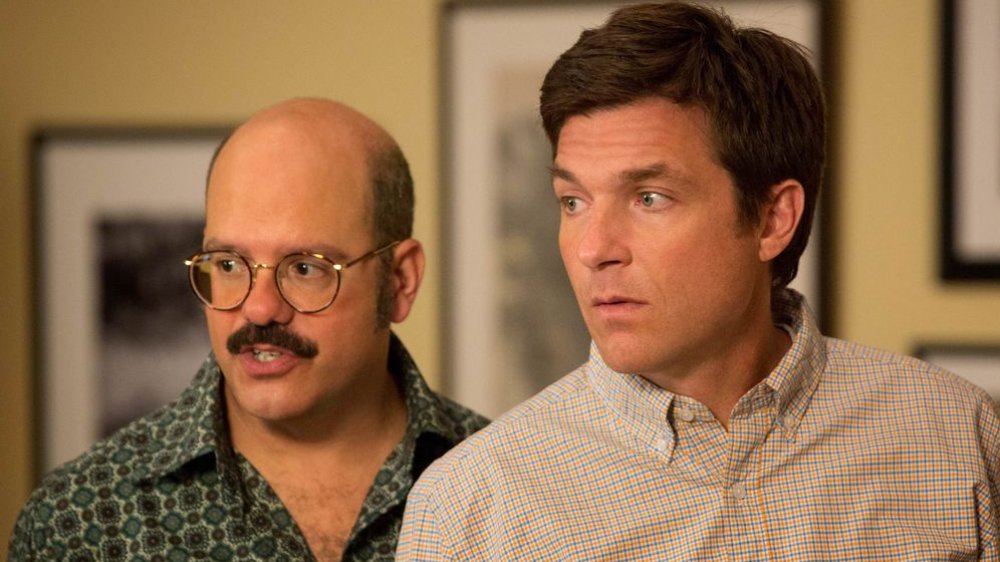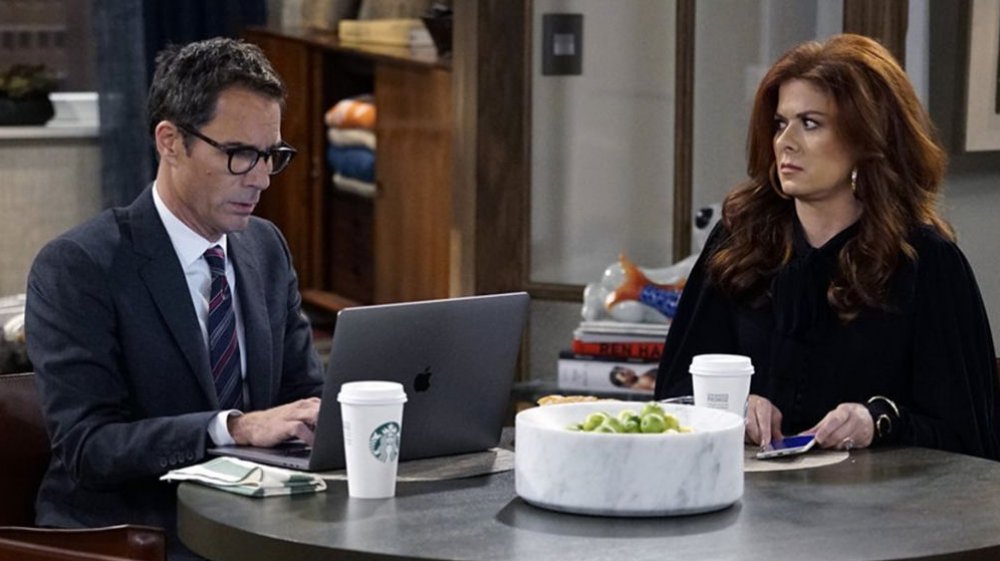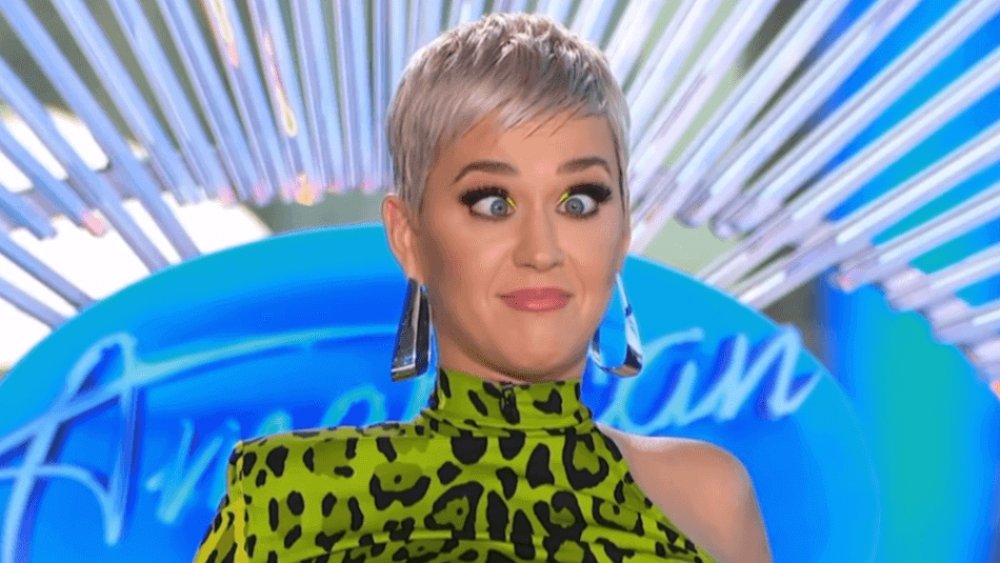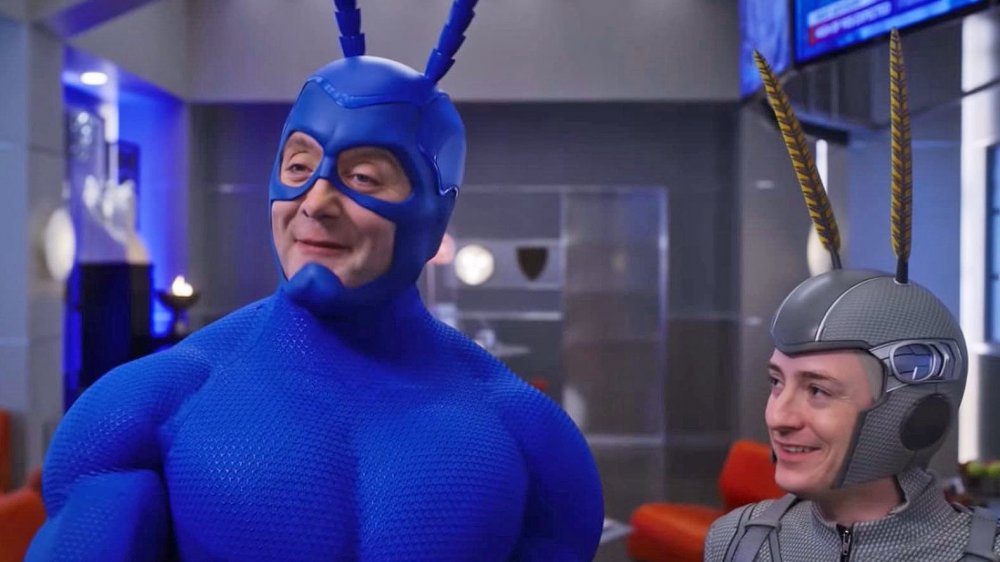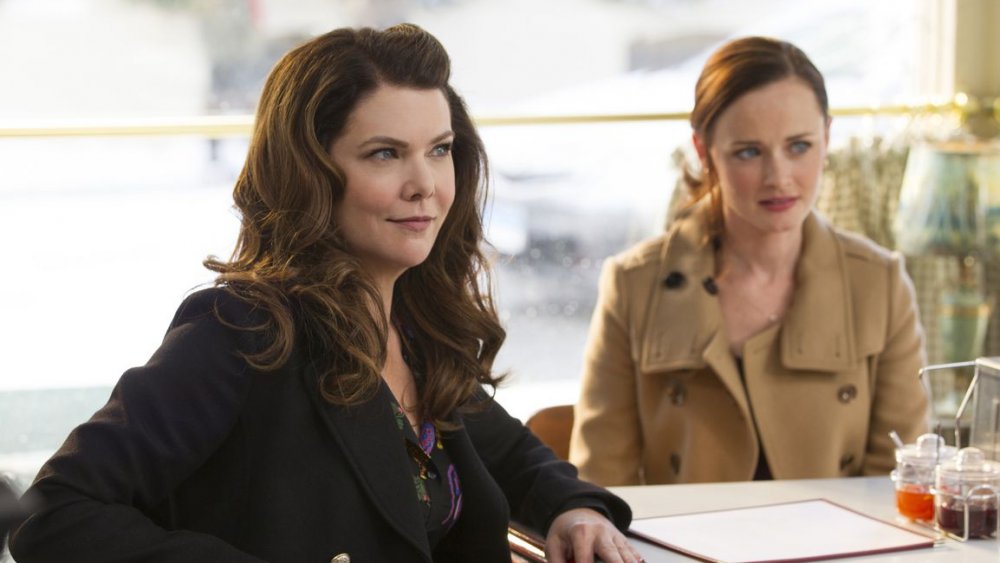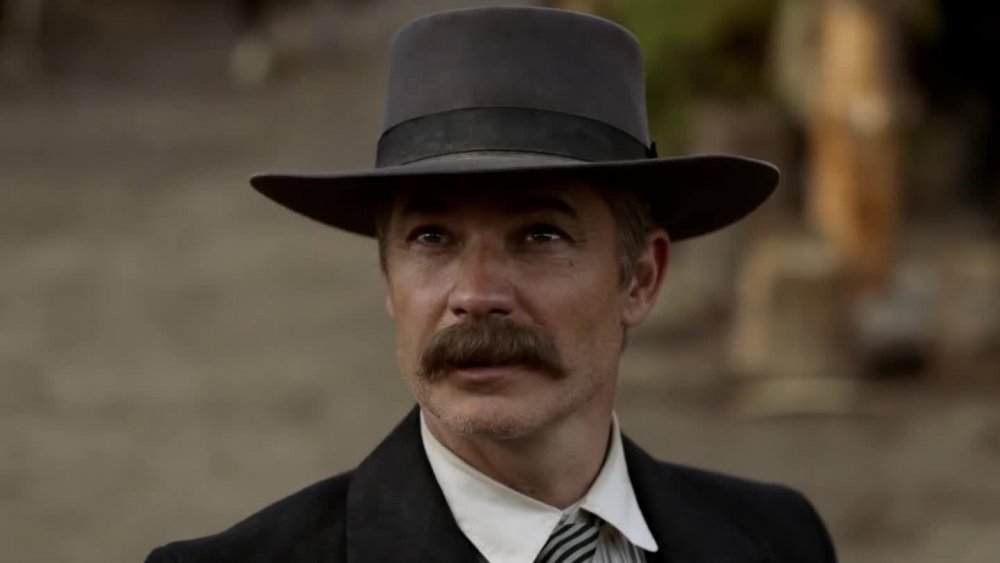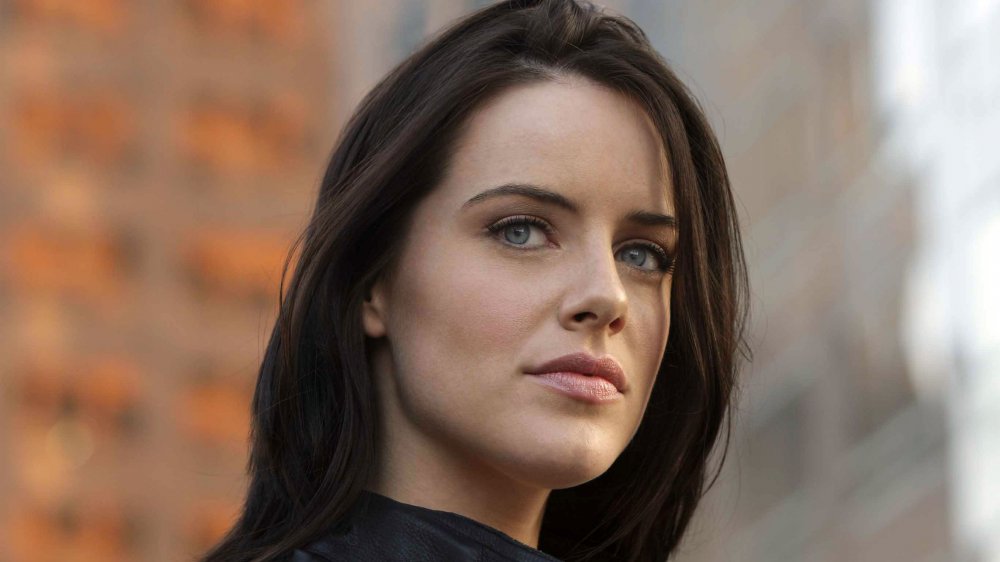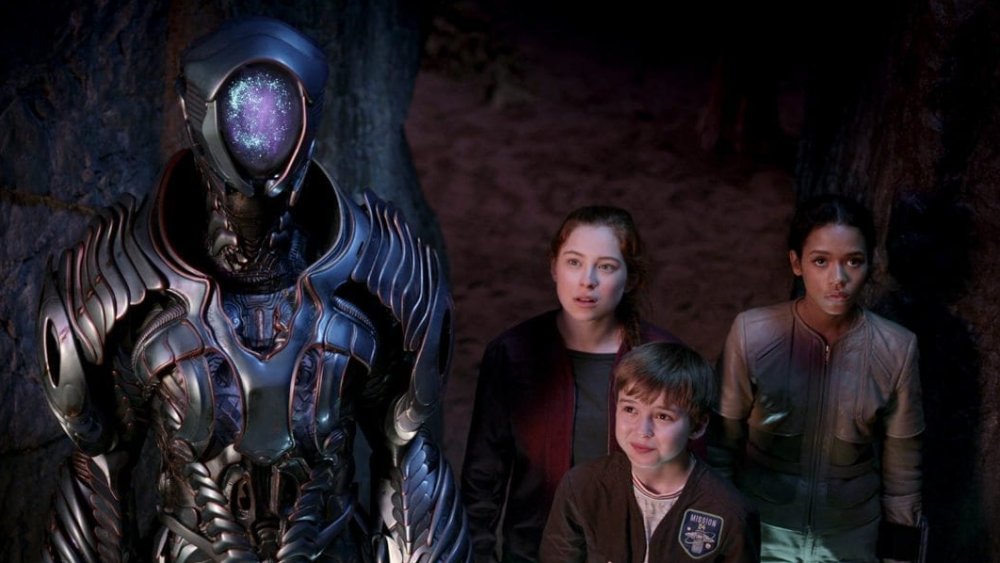The Most Expensive TV Series Reboots
These days, high-profile TV shows are more and more like movies that air each week, complete with big-screen production values. It can cost a lot of money to make a good series, what with all the set construction, costumes, special effects, actor salaries, and other major expenses. That's to say nothing of the millions that networks, cable channels, and streaming services spend to market and promote their shows — they've got to do a lot (and part with a lot of dough) to differentiate their products from the competition.
One other way networks and services can get an upper hand: bring back shows the public already knows about and loves. Reviving an old show is a relatively safe investment, because it's easier to attract viewers to a known entity than it is a brand-new one. On the other hand, reboots can be costly — it's not cheap to get popular and busy actors back to the project that made them famous. For that reason and others, reboots can wind up with huge price tags. Here are the most expensive blasts from the past to hit TV in the last few years.
Arrested Development
When Arrested Development premiered on Fox in 2003, there had never been anything like it. The comedy was shot like a documentary film, rather than the studio-and-laugh-track setup that was the industry standard, and presented in a serialized format. For audiences to know what was going on with the members of the dysfunctional (and criminal) Bluth family, they had to tune in every week and pay close attention, because each episode came densely packed with jokes and callbacks. But such a show was too ahead of its time to succeed. Despite winning the Emmy Award for Outstanding Comedy Series in its first season, Arrested Development brought in dreadful ratings, leaving Fox to cancel it in 2006 after a third, abbreviated season.
Cut to seven years later, when Netflix picked up the long dormant series for what would ultimately be two seasons. By taking a chance on an Arrested Development revival, Netflix put broadcast and cable networks on notice — it could offer niche or cult favorites to subscribers and not have to worry about things like advertisers, episode run time, or most importantly, the Nielsen ratings. Creator Mitchell Hurwitz had the full freedom to make exactly the intricate and sharp show he wanted to make, and with the budget of a popular, profitable series. Netflix wasn't shy about dropping a stunning $45 million on the cult classic.
Will & Grace
Will & Grace was the last vestige of NBC's "Must See TV," the network's final multi-camera, heavily-watched sitcom of its Thursday-night glory days of the late '90s and early 2000s. The studio-shot zany friendship comedy looks quaint by today's standards, but it was revolutionary during its 1998 to 2006 run, as it was among the first to feature multiple gay characters. Not only did viewers flock to it — it finished at #9 in the Nielsen ratings for the 2001-2002 season — but it won all kinds of Emmys, too, including Outstanding Comedy Series and at least one each for all four main cast members — Eric McCormack, Debra Messing, Sean Hayes, and Megan Mullally.
In the summer of 2016, the cast and creators Max Mutchnick and David Kohan reunited to make a Will & Grace internet video about the upcoming election. They had such a good time — and the clip garnered so much attention — that NBC happily ordered a revival. And during the middle of that first reboot season, the network went ahead and green-lit a second and third season. Will & Grace 2.0 wasn't exactly a mega-hit, ranking #36 in total viewers for its first run of episodes, and #72 for its second. That's not a very good return on NBC's investment — the network had to pay a licensing fee of $2 million per episode. That's not even counting the initial salaries of $250,000 per episode for each of its four stars.
American Idol
American Idol defied the increasingly fragmented worlds of 2000s television and music to become the biggest thing in both arenas. The top-rated show for an unbelievable six years in a row, the televised talent search produced major pop stars on the regular, including Kelly Clarkson, Carrie Underwood, Adam Lambert, Jordin Sparks, and Chris Daughtry. But as is the fate of most TV shows, American Idol's popularity slowly declined, along with its influence. The weekly performance show fell to #19 in the annual ratings for the 2015-16 season, which would be the last run of American Idol on Fox.
In May 2017 — just one year after the show ended — ABC announced that it had picked up a revival of American Idol. Little would change in the new iteration — the format and host Ryan Seacrest remained intact. New to the mix: the judges. ABC secured the services of three hugely successful musicians to decide who had what it took to make it as a singer: pop superstar Katy Perry, R&B and soft rock legend Lionel Richie, and country hitmaker Luke Bryan. Getting those three to put off other activities to make a TV show was going to cost ABC, and the network paid up. According to the Wall Street Journal, Perry commanded a $25 million salary, while Bryan earned $12 million, and Richie $10 million. As for Seacrest, he made out with a nice $12 million.
The Tick
Putting the "comic" in comics since the 1980s, The Tick is probably the silliest superhero property of all time. Originating as a black-and-white indie title by Ben Edlund, it's about a gigantic, gregarious, "night-invincible" superhero in a blue suit who is sworn to protect "The City" against over-the-top super villains with the assistance of his best pal Arthur. The Tick has been adapted for television three times — as an animated series on Fox Saturday mornings in the '90s, a short-lived live-action version starring Patrick Warburton in 2001, and in 2017 by Amazon for its Prime Video service.
This time, British comedian and actor Peter Serafinowicz took the lead as the Tick with Griffin Newman as the unsteady Arthur. Amazon streamed two seasons of the highly cinematic, serialized take on The Tick before cancelling it. As the show was critically acclaimed and Amazon doesn't release viewership numbers, we can only assume its cancellation came down to money. Indeed, the half-hour series cost a whopping $5 million per episode in production costs.
Gilmore Girls
Has there ever been a more low-key show that inspired as passionate a fan base as Gilmore Girls? From 2000 to 2007, the warm dramedy aired to low ratings on the WB (and then the CW), detailing the unique relationship between Lorelai Gilmore (Lauren Graham), a wickedly funny bed-and-breakfast operator, and Rory (Alexis Bledel), the daughter she had at 16 years old, a staggeringly smart and thoughtful teenager. They live in the quirky small town of Stars Hollow, Connecticut, which seems to have a town hall meeting or harvest festival every day of the year. Creator Amy Sherman-Palladino (who'd go on to win a slew of Emmys for The Marvelous Mrs. Maisel) left the show in 2006 after a disagreement with CW executives, precluding her from finishing Gilmore Girls the way she'd always intended to — events leading up to Rory saying four very particular and poignant words to her mother.
A decade later, Netflix, that savior of canceled-but-beloved shows, decided to bring back Gilmore Girls for a limited run of four feature-length installments called Gilmore Girls: A Year in the Life. Securing the services of Graham and Bledel alone — both of whom had gone on to productive careers — cost the streamer a fortune. Each actress commanded $750,000 for each of the four movies, for a $6 million total salary for the duo. For fans, it was worth it to see Sherman-Palladino give her show the ending she always wanted.
Deadwood
Deadwood is among the most acclaimed shows to ever air on HBO, which is saying something of a network that also gave the world The Sopranos, Game of Thrones, Chernobyl, and Succession. The slow-burn, based-on-real-life saga of the 1890s gold boom Dakota Territory settlement of Deadwood was an ultra-realistic and exceedingly grim reimagining of the Western, with conflicted good-guy sheriff Seth Bullock (Timothy Olyphant) pitted against conniving bar-and-brothel proprietor Al Swearengen (Ian McShane). Despite acclaim and 28 Emmy Nominations (including eight wins), the show was abruptly canceled after its third season in 2006... with several unresolved plot lines left hanging.
Corporate squabbles between HBO's corporate parent and Deadwood's production companies were responsible, but talk of a reboot or revival to wrap up the show's storylines started almost immediately. Finally, in 2018 — 12 years after canceling it — HBO gave the go-ahead to a one-off Deadwood movie. It wasn't cheap or easy to reassemble the show's huge original cast for Deadwood: The Movie, nor to re-create the re-creation of 19th century Deadwood. By the time the film aired in May 2019, it had cost producers nearly $21 million, or around double the expenditures of a couple of episodes of the average prestige cable drama.
Bionic Woman
Predating the recent TV reboot fad by a good decade, a sleek new version of the classic, campy The Bionic Woman series from the 1970s hit NBC in 2007. While the original series was a gender-flipped spin-off of The Six Million Dollar Man about a bionically-enhanced tennis player-turned-government-agent named Jamie Sommers (Lindsay Wagner), Bionic Woman concerned the half-woman, half-machine bartender of the same name (Michelle Ryan) working for a shady global organization.
Hoping to capitalize on the attention paid to its sci-fi hit Heroes, NBC ordered Bionic Woman for fall 2007 and presented it as one of its flagship new shows. As such, the Peacock spent a fortune to promote and market Bionic Woman, along with an incredible $7 million or so on the first episode. All told, NBC spent about $25 million on the reboot... and it was all essentially for naught. After low ratings and an interruption in the first season by a writers strike, NBC canceled Bionic Woman after airing just eight episodes.
Lost in Space
Star Trek isn't the only low-budget 1960s science-fiction television series that Hollywood can turn to when it needs to wring new life out of an old franchise — Lost in Space comes back into orbit every now and then, too. The futuristic take on The Swiss Family Robinson finds the Robinson family in the futuristic, far-off year of 1997, knocked off course on their mission to travel to a space colony and finding their way back. Its most famous contribution to the culture: the Robinsons' robot, which loved to warn of "Danger!"
In 1998, Hollywood turned Lost in Space into an $80 million sci-fi epic starring William Hurt, Gary Oldman, and Heather Graham. It grossed a so-so $69 million in North America, but in 2018, Netflix figured enough time had passed to get Lost again. It's a much darker but well-produced take on Lost in Space, and features a cast of well-known actors, including Molly Parker (Deadwood) and indie movie icon Parker Posey. Making a show set in space that looks good and is stocked with name talent isn't inexpensive. The average episode of the Netflix show costs more than $7 million to produce.
